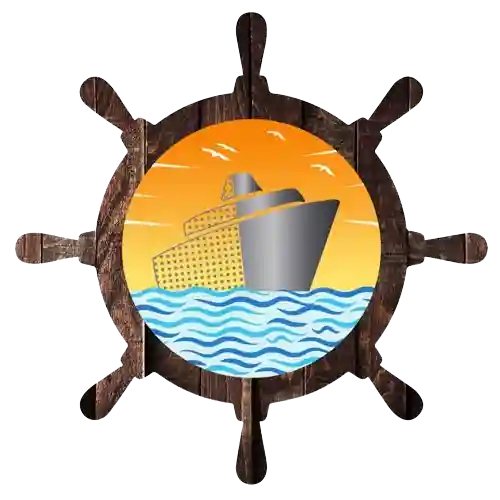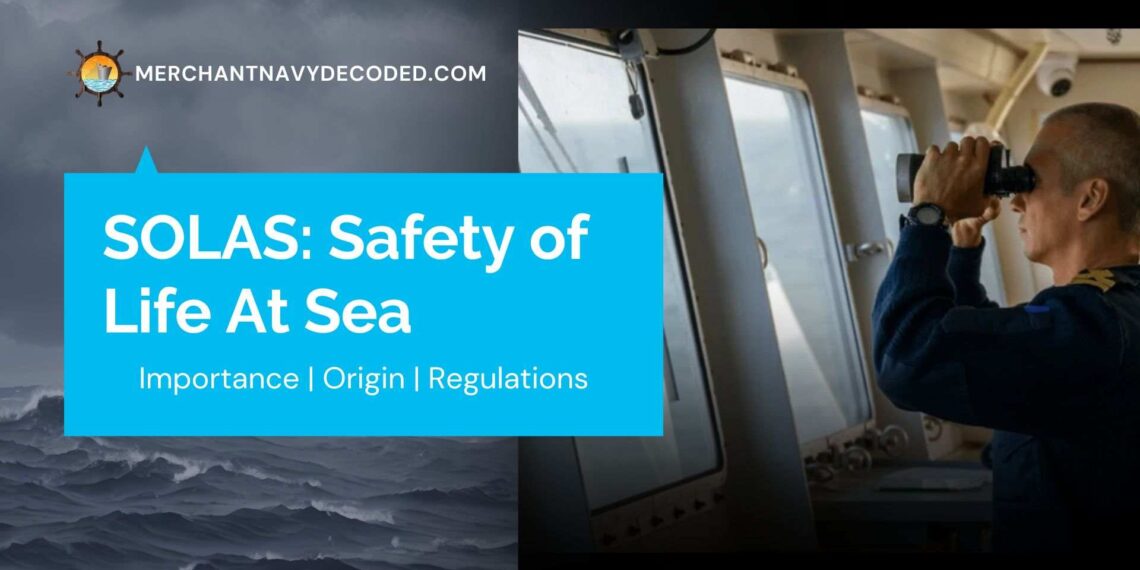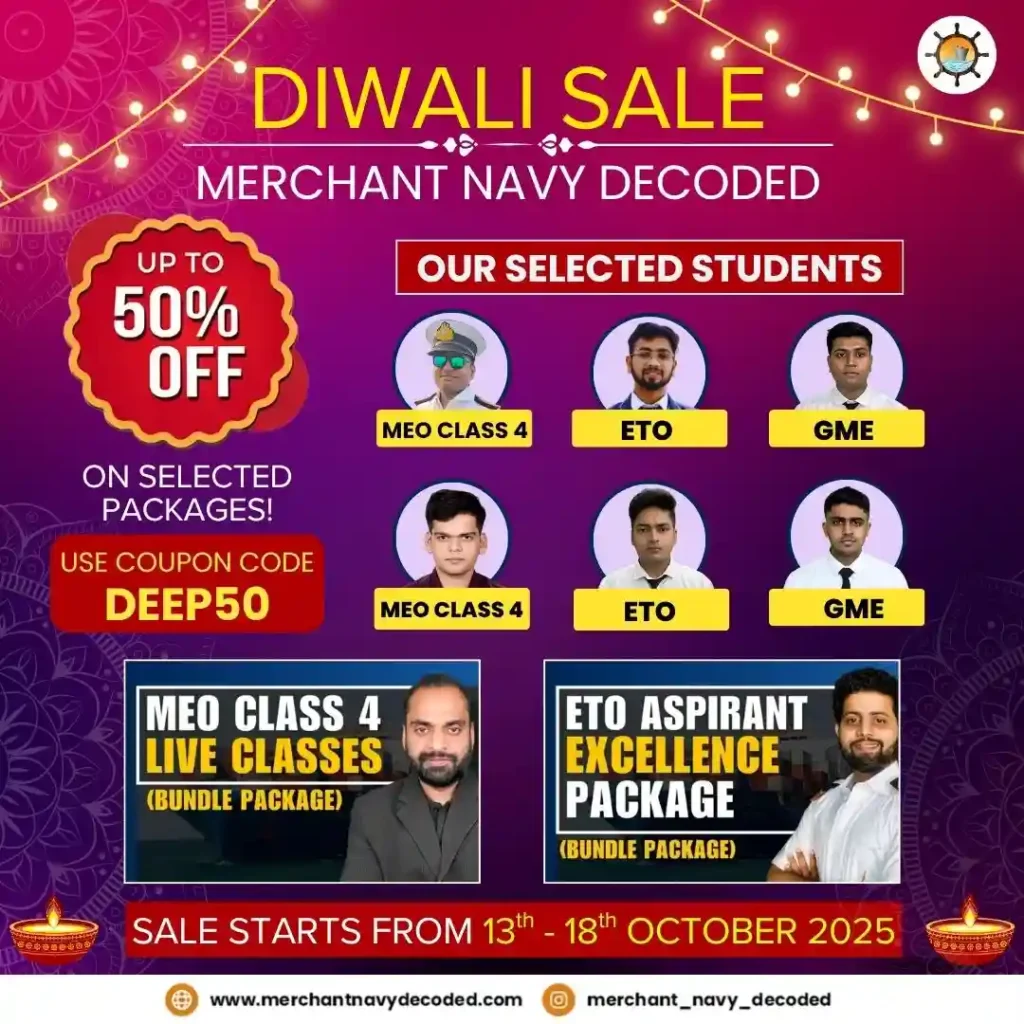Safety of Life at Sea (SOLAS): Your Complete Guide
1:- Introduction to Solas:
- Introduction to SOLAS: Learn about why SOLAS (Safety of Life at Sea) matters globally. It’s like a big book of rules that all ships must follow to keep everyone safe at sea.
- SOLAS Regulations and Impact: Find out the important rules of SOLAS, covering how ships are built, what safety equipment they need, how they navigate, and what to do in emergencies. Real-life stories, like the Titanic sinking, show why these rules are so crucial.
- Enforcement and Future Trends: See how countries make sure ships follow SOLAS rules in their waters. Discover how SOLAS is always changing to keep up with new challenges, like making mooring operations safer and updating communication systems for emergencies.
2:- Introduction to SOLAS
SOLAS, which stands for Safety of Life at Sea, is an international maritime safety treaty. It’s like a rulebook for ships, ensuring they’re safe for passengers, crew, and the environment. SOLAS is an international treaty ensuring maritime safety worldwide.
- It serves as a comprehensive rulebook for ships, covering construction, equipment, navigation, and emergency procedures.
- The primary goal of SOLAS is to prevent accidents at sea and safeguard the lives of passengers, crew, and the marine environment.
- Understanding SOLAS is crucial for anyone involved in maritime activities, as it sets high standards for ship safety and emergency preparedness.
3:- What is SOLAS?
SOLAS, first introduced in 1914, was a direct response to the Titanic disaster, which highlighted the need for improved maritime safety standards. Over the years, SOLAS has evolved through multiple amendments, adapting to technological advancements and emerging challenges.
3.1:- What are the Objectives of SOLAS
The primary aim of SOLAS is to establish minimum safety standards for ships regarding:
- Construction and design.
- Equipment and operation.
- Navigation and communication systems.
- Emergency preparedness.
4:- What is the Importance of SOLAS?
Imagine you’re on a ship in the middle of the ocean. The ship must be built to withstand rough seas and storms. SOLAS ensures ships are designed and maintained to high safety standards, reducing the risk of accidents and disasters.
4.1:- The Titanic Disaster: Origin of SOLAS
In the early hours of April 15, 1912, the RMS Titanic, a majestic ocean liner, struck an iceberg and sank in the icy waters of the North Atlantic. The tragedy resulted in the loss of over 1,500 lives, but what does this historic event have to do with SOLAS?
- Inadequate Safety Measures:
- The Titanic was considered unsinkable due to its advanced design and luxurious amenities.
- However, it lacked sufficient lifeboats and lifesaving equipment for all passengers and crew.
- The ship’s safety provisions were woefully inadequate.
- SOLAS Emerges:
- The Titanic disaster served as a wake-up call for the maritime community.
- In response, the first SOLAS Convention was held in 1914 in London.
- Key SOLAS Provisions:
- Lifeboats: SOLAS mandates sufficient lifeboats and life rafts for all passengers and crew.
- Watertight Compartments: Ships must have watertight compartments to prevent rapid flooding.
- Fire Safety: SOLAS addresses fire prevention, detection, and firefighting equipment.
- Radio Communication: SOLAS ensures reliable communication at sea.
- Modern Day Impact:
- SOLAS has evolved over the years, adapting to changing technologies and global challenges.
- It influences ship design, construction, and operation worldwide.
- From cargo vessels to cruise ships, SOLAS standards enhance safety for millions of people.
5:- SOLAS Chapters
5.1:- SOLAS Chapter 1
General Rules: Nations agree to follow rules ensuring ships are surveyed and certified for sea travel.
5.2:- SOLAS Chapter 2
Ship Building: Focuses on ship design and construction for overall safety, including machinery and electrical systems.
Fire Safety: Outlines measures for preventing, detecting, and fighting fires on ships.
5.3:- SOLAS Chapter 3
Emergency Gear: Sets standards for emergency equipment like lifeboats and liferafts.
5.4:- SOLAS Chapter 4
Radio Use: Regulates ship-to-shore and ship-to-ship radio communications for emergencies.
5.5:- SOLAS Chapter 5
Safe Sailing: Guides ships on safely navigating waters and protecting the ocean.
5.6:- SOLAS Chapter 6
Cargo Handling: Advises on safely carrying goods and fuel to prevent accidents.
5.7:- SOLAS Chapter 7
Hazardous Materials: Dictates safe transport of dangerous goods across the seas.
5.8:- SOLAS Chapter 8
Nuclear Vessels: Covers safety for ships powered by nuclear energy.
5.9:- SOLAS Chapter 9
Ship Management: Introduces rules for running ships safely and efficiently.
5.10:- SOLAS Chapter 10
Speedy Vessels: Safety guidelines for fast ships with unique designs.
5.11:- SOLAS Chapter 11
Extra Safety: Additional safety regulations for ships.
Security at Sea: Enhances security against threats to ships and ports.
5.12:- SOLAS Chapter 12
Bulk Carrier Safety: Extra precautions for large ships carrying unpackaged bulk cargo.
5.13:- SOLAS Chapter 13
Rule Checks: Ensures ships are following all the safety regulations.
5.14:- SOLAS Chapter 14
Polar Travel: Special rules for ships in icy polar regions.
6:- Why is the SOLAS Convention Required?
- Description: SOLAS is an international maritime treaty that sets minimum safety standards for the construction, equipment, and operation of merchant ships.
- Purpose: The convention aims to reduce maritime accidents, protect human lives at sea, and prevent marine environmental damage.
- Scope: It applies to various aspects of shipping, including ship construction, fire safety, life-saving appliances, navigation, and cargo carriage.
- Benefits: SOLAS enhances the safety of international shipping, ensures consistent global practices, and facilitates international trade.
- Adaptability: The convention is regularly updated to incorporate new safety measures and respond to technological advancements.
- Enforcement: Compliance is ensured through certificates issued by flag states and inspections by port states.
- Global Impact: It has been ratified by most seafaring nations, making it one of the most widely followed maritime safety treaties.
- Example: After the Titanic disaster, SOLAS introduced requirements for sufficient lifeboats on ships, significantly improving survival rates in maritime disasters.
7:- Conclusion:
SOLAS is like a safety net for anyone traveling by sea. By setting high standards for ship safety, it helps protect lives, and the environment, and ensures smooth sailing for everyone on board. So the next time you embark on a sea voyage, you can rest assured knowing that SOLAS is working behind the scenes to keep you safe.
Disclaimer :- The opinions expressed in this article belong solely to the author and may not necessarily reflect those of Merchant Navy Decoded. We cannot guarantee the accuracy of the information provided and disclaim any responsibility for it. Data and visuals used are sourced from publicly available information and may not be authenticated by any regulatory body. Reviews and comments appearing on our blogs represent the opinions of individuals and do not necessarily reflect the views of Merchant Navy Decoded. We are not responsible for any loss or damage resulting from reliance on these reviews or comments.
Reproduction, copying, sharing, or use of the article or images in any form is strictly prohibited without prior permission from both the author and Merchant Navy Decoded.




